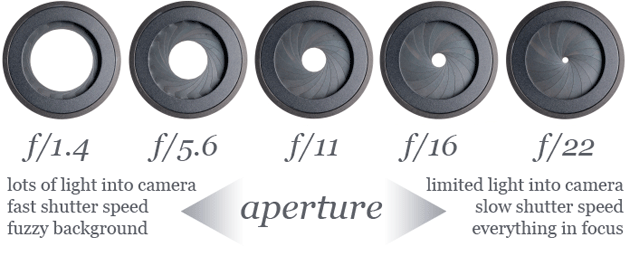

As the subject moves further away from the camera, that depth of field becomes a little greater. For instance, a lens such as the Nikon 85mm f/1.4 will have paper thin depth of field when used at f/1.4, at close distances to the subject. However, it’s very important to understand that depth of field works differently dependent on the lens you are using. When used creatively, a lens with a large aperture used wide open, allows you to be very selective in what you show the viewer, and what you hide in soft out of focus areas, known as bokeh. In addition to their low light capabilities, many photographers purchase fast lenses simply because of the ability to shoot with a shallow depth of field.

I can honestly say that I have never once had one come straight out of the box brand new, and not be in perfect working order, so treat that option (that the lens is faulty) as a last resort for now. In my 20 years in photography, I’ve owned and worked with a lot of gear – 0ver a dozen different camera bodies, and several dozen lenses I’ve used at one point or another. It may be a portrait photographer trying to use an 85mm f/1.8 wide open, or someone doing street photography with a 35mm f/1.4, and for some reason there’s a lack of sharpness to the image that will invariably be blamed on the lens. The 85mm f/1.4 is one of my go-to lenses for almost any portrait situation for just that ability. Another advantage to the wider aperture is the ability to create shallow depth of field in your image, which can make your subject really stand out from the background. This is why lenses like the 70-200mm f/2.8 are such a workhorse in a photojournalist’s camera bag. For the purpose of this article, I’m going to define fast lenses as ones with maximum apertures wider than f/4.įast lenses are great for a lot of things, shooting in low light being one of the major advantages, because the wider aperture allows more light into the imaging sensor, which in turn allows you to use a faster shutter speed. One such item that seems to have that learning curve attached, is a fast lens (one with large maximum aperture).Īt some point, we all begin dreaming of fast (large aperture) lenses. There are occasions, however, when a piece of gear has a learning curve attached to it that needs to be solved before you can fully enjoy it. It may be that it was overhyped, or it doesn’t suit your workflow. A 24mm f/1.4 lens, shot at f/1.4 was used for this image. Fast lenses enable the photographer to use shallow depth of field creatively.


 0 kommentar(er)
0 kommentar(er)
